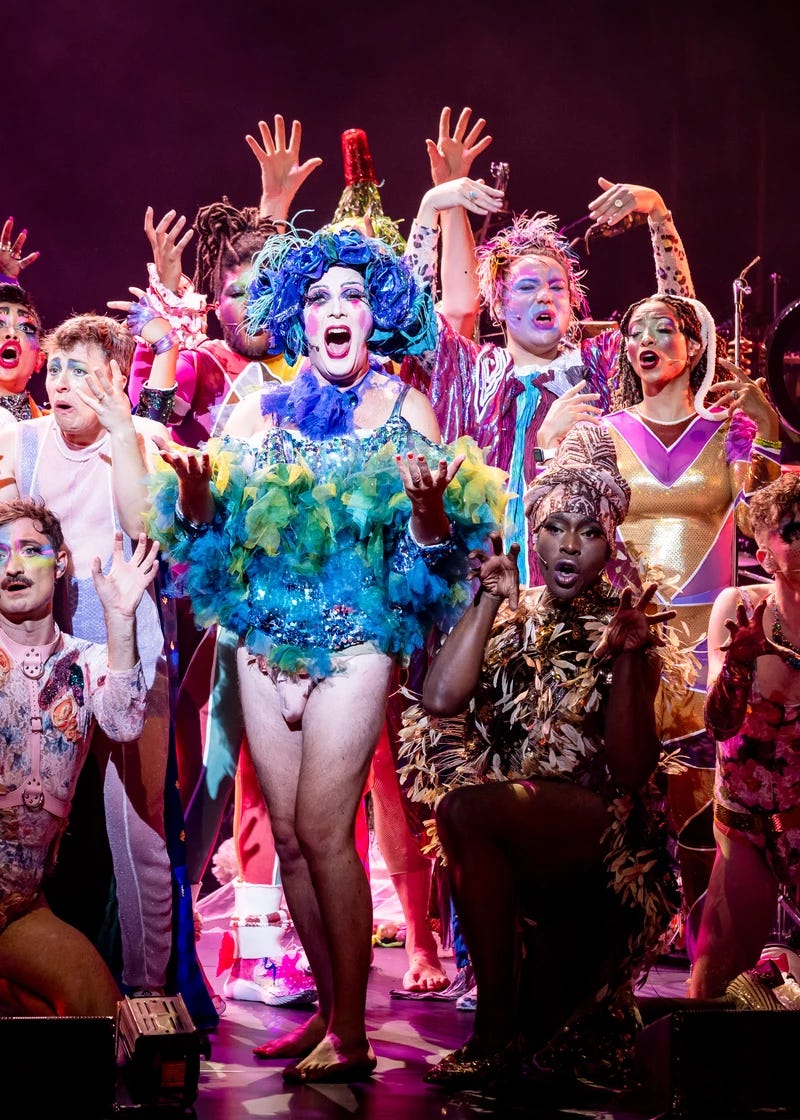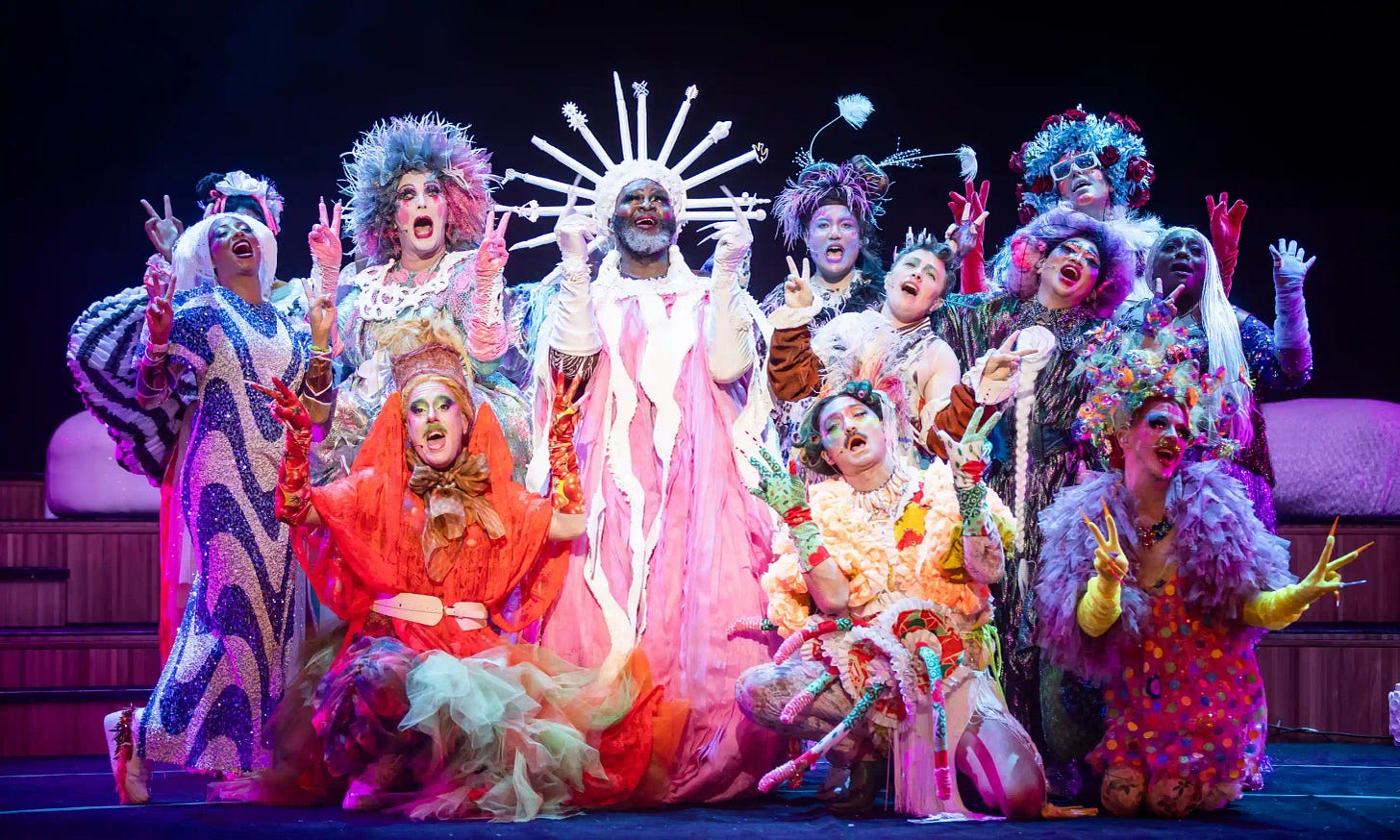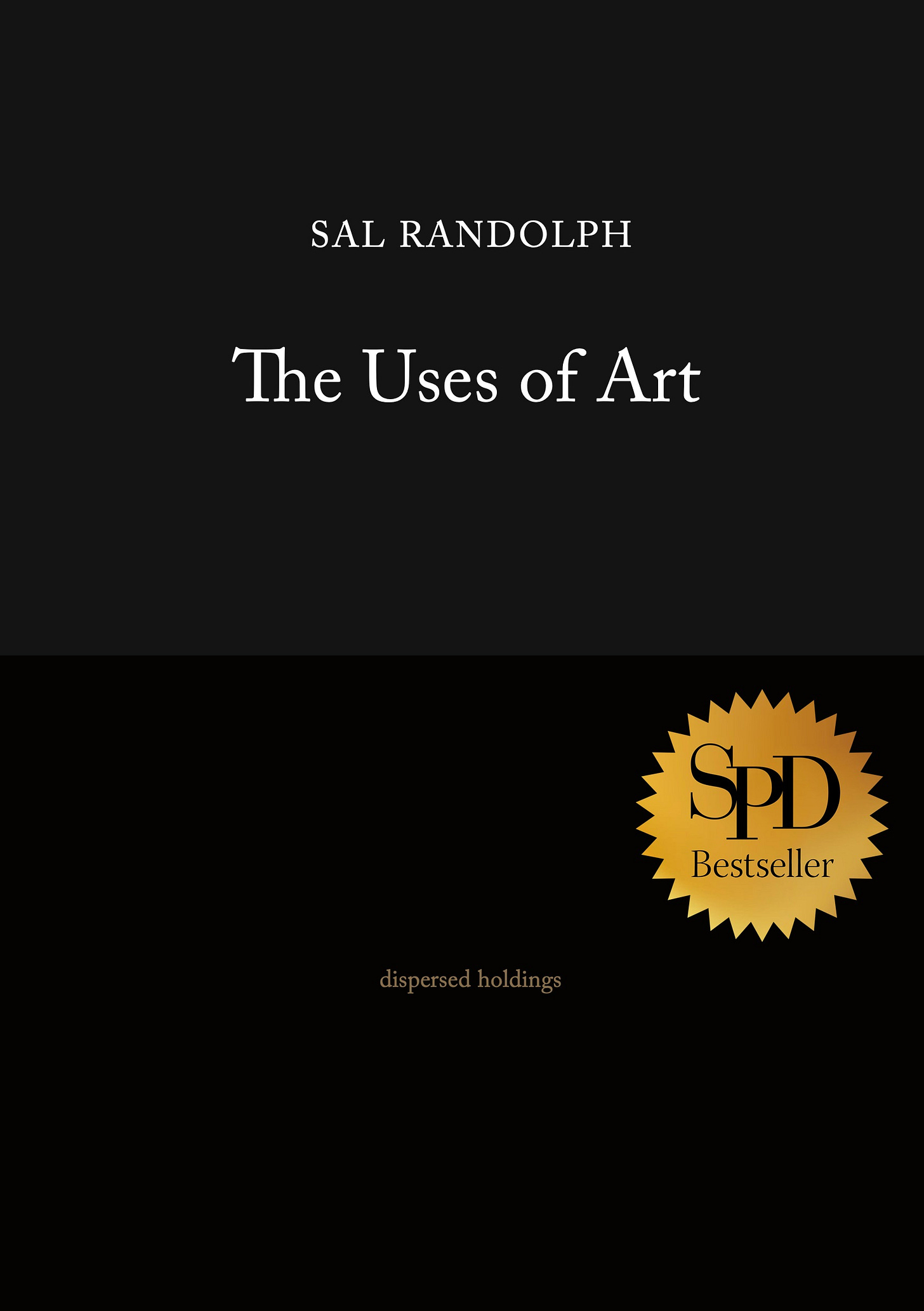
Dear Friends,
I’ve been thinking these days about the why of life. I’ve been feeling a certain dryness of the spirit, as the old saints used to call it. Then I took myself to BAM to see Taylor Mac’s new show, the Bark of Millions. From the first number it was like a drenching rainstorm. A waterfall. A plunge into the ocean.
When I got home from the show, I lay in bed, curled in the dark, not ready to sleep. I felt washed inside, alive to my body. I’ve been trying to understand exactly what about the experience made me feel so different in myself.
— Sal

Bark of Millions
Bark of Millions, Taylor Mac and Matt Ray’s latest production, is subtitled: A Parade Trance Extravaganza for the Living Library of the Deviant Theme. This is a better description than the one I read before I went. At the beginning of the show, Taylor announces that “our goal is to make you all queer, and if queer is already your state, then our goal is to make you more queer.”
Queer is already my state, but minute by minute I could feel myself inevitably getting queerer. Across more than four hours Taylor and his companions sang, celebrated, and mourned their way through fifty-five songs (fifty-five, for the number of years since Stonewall); each song inspired by a person who has been part of queer history.
The “bark of millions” of the title is a ship, the sun god Ra’s barque of a million ages, captained by the bi-gendered Atum. It is also a bark, in the sense of a shout, a cry. It is an extravagant sound. So many voices rising up. The chorus sings “and the millions are us queers!”
And Atum is queer Mixing genders and desire So the god who birthed the world Who birthed the one who gave us fire So were made between the genders In the Bark of Millions
A Fabulous City
Taylor Mac is part of my extended community, so I’ve been seeing Taylor’s work for years, starting with Red Tide Blooming in 2006, at PS 122 in the East Village — a story about ecology and drag where Taylor memorably bared his genitals onstage. In 2009 I joined the audience for the five-hour Lily’s Revenge, a “flowergory manifold” inspired by Noh drama, and then, a few years later, I exulted in all twenty-four hours of A 24-Decade History of Popular Music.
A long show is like a drug. It has time to re-arrange your sense of self. A long show makes a community of the audience. You have time to feel what it would be like to live in that new world. Talking about his twenty-four hour show, Taylor says: “I’m interested in what happens when the audience has to commit to something. It stops being just a party game. It becomes […] something deeper.”
At some point, after the second hour, I began to image a fabulous city — all of New York, queer and sparkling. As if Machine Dazzle, Bark’s costume designer, got up in the morning and did all of our clothes. If you know me in person, you know I almost always wear black, but apparently I have in me sequined and glittering millions.
At several points in the show I felt great glowing rushes of fondness and admiration. Taylor is easy to love, but it’s not quite that. The swells of love I felt were collective: for everyone on stage, for everyone in the audience, for everyone who was part of the history that was being invoked. There were exuberant songs, but there were also sad songs and angry songs. The sadness and anger were somehow celebrations in their own right.
There is a feeling of modesty about Taylor when you spend time with him socially. In person, he is gentle, often quiet. It’s when he inhabits his drag-self that he changes scale, growing from something individual towards a collective fantasy. Maybe this is part of the genius of drag, its genie: wherever you are small, drag enlarges you towards the epic. Drag is a kind of magic that goes beyond the transformations or borrowings of gender performance; it is fabulousness, and extravaganza; it is excess, sequins, glitter, color, exaggeration, camp, raunch, burlesque. It is a trance and a parade and the beginnings of a new, queerer, world.
As the show reached its end, the notes I was taking became incomprehensible, except for the line “why, exactly, am I crying?” The cast was singing in chorus and there was sadness, there was joy, and there was longing.
This, I said to myself as I was walking down the street into the night, is one of the answers to “why be alive.”
So now I can see that I’ve been writing a kind of love letter, and I might as well let it out: Dear Taylor, I love you. I want to live in your world, and I’m glad to be living in your world, even though it also breaks my heart. xoxox Sal.

Taylor Mac
Bark of Millions played at BAM February 5-10, 2024.
It will be playing in Berkeley, California at CalPerformances, February 23-25, 2024.
Taylor Mac’s 24-Decade History of Popular Music
Taylor Mac’s 24-Decade History of Popular Music streams on Max. Trailer:
Further adventures and new ways of seeing can be found in my book, The Uses of Art.
Artist Sal Randolph’s THE USES OF ART is a memoir of transformative encounters with works of art, inviting readers into new methods of looking that are both liberating and emboldening.
Dazzlingly original, ferociously intelligent.
— Michael Cunningham
A joyful, dazzling treasure-box of a book.
— Bonnie Friedman
Here’s a guide, to waking up, over and over again.
— Roshi Pat Enkyo O’Hara






LOVELY!
Such an uplifting post, Sal! I completely understood that uprush of collective emotion that can happen at a show, a gig, or a social gathering. It proves that a crowd can produce the best of humanity (impersonal, generous love) as well as the worst (mob anger etc). It's also what we can't experience online, but thanks so much for describing it here.